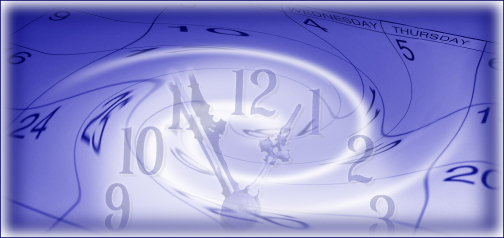What is it?
The Polyphasic Sleep Schedule is a term coined by psychologist J.S Szymanski in the early 20th Century. The name is quite self-explanatory; ‘poly’ meaning ‘many’, and ‘phasic’ meaning ‘phases’. The practice of polyphasic sleep therefore means breaking up sleeping time into smaller parts throughout the day with the aim of reducing time spent sleeping to between two and five hours each day. This is in contrast to what most adult humans currently practice which is known as monophasic sleep (one single phase)
Who does it?
Aside from people with a circadian- rhythm sleep disorder; polyphasic sleep is common in many animals. It is also seen in human infants and many elderly.
Some people choose to experiment with their sleep schedule in order to be more productive. More hours in the day can of course free up a lot of time to explore interests. Books get read, and written, new languages can be learnt, a super-toned body becomes attainable. It is noted that if you began sleeping only three hours a day (instead of eight) starting at age 20, you would gain over 11 years in an average life-span.
It is commonly thought that many historical figures kept a polyphasic sleep schedule. The list seems to grow as the popularity of sleep hacking grows. Among the list are Leonardo de Vinci, Napoleon, Benjamin Franklin, Buckminster Fuller, Winston Churchill, Nikola Tesla and Thomas Edison. The list however lacks credible evidence and unfortunately they are not here to ask!
Famous British sailor Ellen MacArthur sailed around the globe surviving on about five and a half hours in slices of 20, 40 or 70 minutes. Margaret Thatcher famously got by on four hours sleep, but unless you are genetically predisposed to surviving on that kind of sleep arrangement most people function better at around six hours sleep, making biphasic sleep more suitable than polyphasic for most.
How do I do it?
Prepare!
The transition will be extremely tough and will require extreme discipline and will-power to inflict this on yourself. Expect to feel like a zombie for a few weeks while your body adjusts. The effects of sleep-deprivation are hard enough when it is out of your control. It takes dedication to punish yourself day after day but advocates think the pay-off is worth it for the increase in productivity- even if only for a few months. Participants report clearer mental clarity, more energy and a learned-ability (for some) to fall alseep very quickly (a blessing for insomniacs perhaps)
Have plenty to do
Forcing yourself to stay awake isn’t fun! If you are not fillling those extra hours in a positive way you will find it even harder to keep going. Boredom is the fastest way to send yourself off to sleep!
Warn your family
When the rest of the world is monophasic it can be difficult to fit in and around your family and friends. Social events will be impacted, and depending on which sleep-schedule you follow (see below) you may find squeezing everything into three to four hour slots need careful planning.
Plan your work pattern
If you work for yourself and from home you are in the best position to begin experimenting with your sleep. If you are an employee you will need to think very carefully about which schedule you choose and perhaps begin when you have a few weeks off work.
Be warned
Practitioners often find they are never the same again after toying with their sleep pattern! Some find it impossible to ever fully go back to monophasic sleep which can be a problem for some.
No one knows for sure the long-term effects of keeping a polyphasic sleep schedule.
Tip
From my research it is evident that the Biphasic sleep pattern may be favourable to most. At least as a starting point. Recently it has come to light that before Thomas Edison invented the incandescent lightbulb humans naturally kept a biphasic sleep pattern, that is sleeping in two distinct cycles every 24 hours (think Siesta). Light bulbs, light from streetlamps, screen glare and even headlights can and do wreak havoc with however nature intended our sleep pattern.
Which sleep schedule?
| Monophasic | 8 hours major sleep episode. Total of 8 hours sleep | ||
| Segmented | Two 3.5 hour major sleep episodes. Total of 7 hours sleep. | ||
| Biphasic (90-minute nap) | 5 hours major sleep episode and one 90 minute nap. Total of 6.5 hours sleep | ||
| Biphasic (20-minute nap) | 6 hours major sleep episode and one 20 minute power nap. Total of 6.3 hours sleep. | ||
| Dual Core (with 1 nap) | 3.5 hours major sleep episode, 1.5 hours major sleep episode and one 20 minute power nap. Total of 5.3 hours sleep. | ||
| Dual Core (with 2 naps) | 2.5 hours major sleep episode, 1.5 hours major sleep episode and two 20 minute power naps. Total of 4.6 hours sleep. | ||
| Everyman (with 2 naps) | 4.5 hours major sleep episode and two 20-minute power naps. Total of 5.2 hours sleep. | ||
| Everyman (with 3 naps) | 3-3.5 hours major sleep episode and three 20-minute power naps. Total of 4 to 4.5 hours sleep. | ||
| Everyman (with 4 – 5 naps) | 1.5 hours major sleep episode and four to five 20-minute power naps. Total of 2.8 to 3.2 hours sleep. | ||
| Dymaxion | Four 30-minute naps (every 6 hours). Total of 2 hours sleep. | ||
| Uberman | Six 20-minute naps (every 4 hours). Total of 2 hours sleep. |
Further reading:
For a detailed description of the various sleep schedules try this kindle edition of Ubersleep. The author has tried all the schedules herself and is arguably the go-to expert. Also available in paperback from Amazon.
Visit Steve Pavlina’s site for his excellent log of his own experiments with polyphasic sleep



